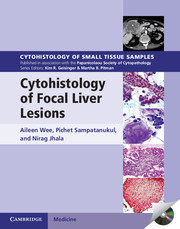Book contents
- Frontmatter
- Dedication
- Contents
- CONTRIBUTING AUTHOR
- Preface
- 1 The focal liver lesion: general considerations
- 2 Morphologic approach
- 3 Diagnostic algorithm
- 4 Focal liver lesions with low or no suspicion of malignancy
- 5 Focal liver lesions suspicious of hepatocellular carcinoma
- 6 Focal liver lesions suspicious of intrahepatic cholangiocarcinoma
- 7 Focal liver lesions from metastases and other malignancies
- 8 Focal liver lesions with cystic appearance
- 9 Focal liver lesions in infants and children
- 10 Ancillary studies
- 11 Techniques and technology in practice
- Index
2 - Morphologic approach
Published online by Cambridge University Press: 05 April 2015
- Frontmatter
- Dedication
- Contents
- CONTRIBUTING AUTHOR
- Preface
- 1 The focal liver lesion: general considerations
- 2 Morphologic approach
- 3 Diagnostic algorithm
- 4 Focal liver lesions with low or no suspicion of malignancy
- 5 Focal liver lesions suspicious of hepatocellular carcinoma
- 6 Focal liver lesions suspicious of intrahepatic cholangiocarcinoma
- 7 Focal liver lesions from metastases and other malignancies
- 8 Focal liver lesions with cystic appearance
- 9 Focal liver lesions in infants and children
- 10 Ancillary studies
- 11 Techniques and technology in practice
- Index
Summary
INTRODUCTION
Focal lesions may arise in normal or aberrant livers affected by steatotic, cholestastic, siderotic, hepatitic, cirrhotic, metabolic or developmental conditions. The inclusion of extranodular hepatic parenchymal cells may prove to be a boon or a bane. Cytologically, these hepatocytes allow for comparison of subtle cytologic abnormalities. Histologically, the architecture and cellular relationships can be contrasted. Knowing the normal will help avoid confusion with focal well-differentiated hepatocellular nodular lesions. The morphology of normal liver and selected diffuse hepatic pathologies that may be associated with nodule formation or have features that may be embraced by some hepatocellular nodular lesions, forms the backdrop of the first section. The second section lays down the foundation of this book with an overview of the pattern recognition with cell profiling approach to the diagnosis of focal liver lesions.
UNDERSTANDING THE BACKGROUND LIVER
The normal liver
Essential highlights of the normal liver background are: (i) the normal blood flow that can be appreciated on radiology, (ii) the “benign aspirate pattern” that can be recognized on cytology, (iii) the preserved architecture that is discernible on histology, and (iv) “wear and tear” pigments.
Radiologic features
“THE NORMAL BLOOD FLOW PATTERN”
The liver occupies the right upper quadrant of the abdomen (Fig. 2.1). Normal liver parenchyma has uniform homogeneous medium level echoes on ultrasound, uniform attenuation on computerized tomography (CT), and uniform signal intensity on magnetic resonance imaging (MRI) (Fig. 2.2). With intravenous contrast agents, the parenchymal enhancement reaches its peak during the portal venous phase (contrast in portal venous system) and is least enhanced during the arterial phase. Areas exclusively supplied by the hepatic artery enhance in the arterial phase and should be distinguished from focal nodular lesions. A delayed or equilibrium phase is typically obtained 3–5 minutes from the start of the intravenous contrast injection during which the concentration of contrast agents reach equilibrium with the extracellular space.
- Type
- Chapter
- Information
- Cytohistology of Focal Liver Lesions , pp. 13 - 59Publisher: Cambridge University PressPrint publication year: 2000



